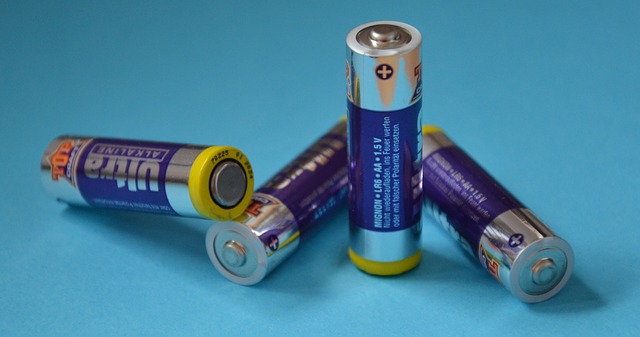Lithium Iron Phosphate Battery Price-Cost and Lasting
Feb 28, 2020 Pageview:1937
Lithium batteries have been in use for their life-sustaining services and qualities for more than 25 years, and thus, its models and versions like lithium-ion cells are mostly adored by the conventional daily users. As time went by, the potential benefits of this battery technology have been successfully applied several inventions like small hand-held electronic devices. As much as these batteries keep being praised for their widespread application, the battery technology is well-famous for catching fires. This factor makes them unsuitable for the creation of massive battery banks.
Humanity was, however, saved by Lithium Iron Phosphate (LiFePO4). It serves as a modified improvement of other lithium-ion batteries and thus focuses on enhancing the safety and performance of these cells. Lithium Iron Phosphate cells are non-combustible cells that allow for the usage of low energy densities, among other advantages that lithium chemistries offered that involved high-power applications. From the global commercial scale, these batteries may be somewhat new, but their protection measures serve to make them one of the most sought-after energy sources. Many qualities come with lithium iron batteries, and these include:
Space efficiency
Lithium Iron batteries are usually associated with space-efficient features because they weight a third of the weight of typical lead-acid cells and about half f the weight of the well-known, manganese oxide. The cells also create an effective method in which the use of both space and weight makes the product or device work better and be lighter.
Safety and stability
Lithium iron batteries are well recognized for their potent safety profile due to the effects of a very stable chemical. Batteries that are based on LiFePO4 have better thermal as well as chemical stability, which tends to enhance the safety and security of all lithium-ion cells. In cases of mishandled devices during their charging/ discharging periods, users don’t have to worry about a fire that could’ve been caused by a simple lithium iron cell. When these cells are exposed to harsh events such as physical damage or short-circuiting, the battery doesn’t catch fire or explode.
Performance
In any given application, one would significantly have to consider the performance of the intended batteries to avoid making the best and most unexpected hazardous mistakes. Lithium iron batteries are linked to longer life-cycles, low self-discharge rates, and are lighter, and these qualities put them in an appealing position for being considered as an attractive option for the invention of many devices. The life-cycle of these LiFePO4 answers is usually set at about five to ten years, depending on the size of the cells.
The charging times of these batteries are also significantly reduced as compared to other common types of battery technologies, making lithium iron cells more suitable for performance-related applications.
Environmentally friendly
Unlike other hazardous battery types like lead-acid batteries, Lithium iron batteries have proven to be non-toxic while lacking other rare earth elements, and this makes them recommendable for application of an environmentally friendly battery. However, as much as they may not have such a negative impact on the environment as lead-acid batteries did, proper guideline procedures need to be followed when disposing of any of the cells.
Which is cheaper, lithium iron phosphate battery or li-ion battery?
One of the most significant factors concerning the performance of the batteries is the cost, as compared to lithium-ion cells, there are a few distinguishing factors you need to look into before comparing the prices of the two battery generations.
Chemistries
The standard charge and discharge rates of any battery type are usually dictated upon by C-rates as the capacity of any typical battery are often 1C. Lithium batteries consist of two different materials for the cathode, like lithium manganese oxide or even lithium cobalt dioxide and a graphite anode. This gives them a discharge rate of about 1C. When it comes to lithium iron batteries, the anodes are made out of similar graphite, but the cathodes are designed from iron phosphate thus, giving it a charge rate of 1C and discharge rate of about 1-25C.
Energy levels
When you compare the energy levels of these two battery technologies, lithium batteries tend to have the lead by providing a higher energy density of 150/200 Wh/kg while the iron phosphate counterpart delivers 90/12 Wh/kg. However, the discharge rates for lithium iron phosphate tend to be higher than of lithium-ion with rates that measure up to 25C thus, giving them the best voltage discharges at very high temperatures.
Life cycle
Lithium iron phosphate contains an expected life-cycle of about 1000- 10000. The batteries are capable of withstanding high-temperature areas with the least rate of degradation. On the other hand, because lithium-ion batteries have a more significant energy density, it tends to have a lower life-cycle of about 500-3000 cycles.
When storing unused batteries, one of the primary considerations is battery chemistry that is capable of being stored for extended periods. Both lithium-ion and lithium iron phosphate have impressive features when it comes to their shelf-life. Lithium-ion only has a lifespan of about 300 days, while lithium iron phosphate can handle up to 400 days.
In conclusion, lithium iron phosphate batteries tend to carry more benefits or outweigh the beneficial advantages that lithium-ion batteries. As so, it can be safe to say that lithium iron phosphate is more expensive as compared to lithium-ion.
How is the cost performance of lithium iron phosphate batteries?
Lithium iron phosphate batteries have proven to have better variations in terms of chemistry, energy levels, life cycles, and even safety measures. Their cost, however, tends to be higher than most other battery technologies because of the many favorable quality traits.
How long do lithium iron phosphate batteries last?
Lithium iron phosphate batteries have astronomical charge/ discharge cycles and, thus, their consideration for use in stationary energy storage systems. With the standard rate of discharge being 1C, lithium iron phosphate has an extended Lifecycle of up to 10000 cycles at most.
Final words
Lithium Iron Phosphate batteries have proven to be efficient battery technologies with some of the best features capable of modifying the performance of lithium-ion cells better and thus providing a much more viable energy solution.
Leave Message
Hottest Categories
-
Hottest Industry News
-
Latest Industry News












